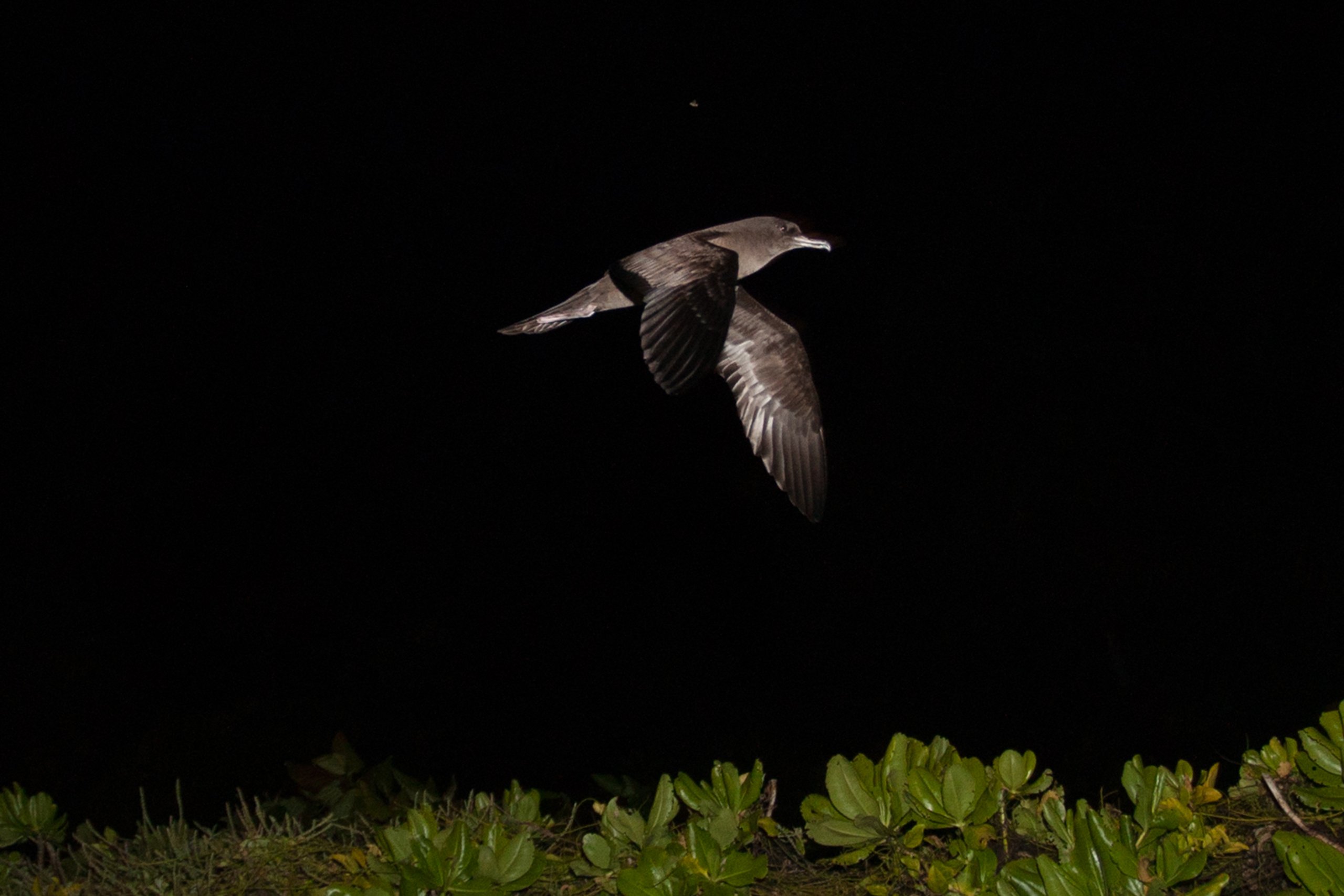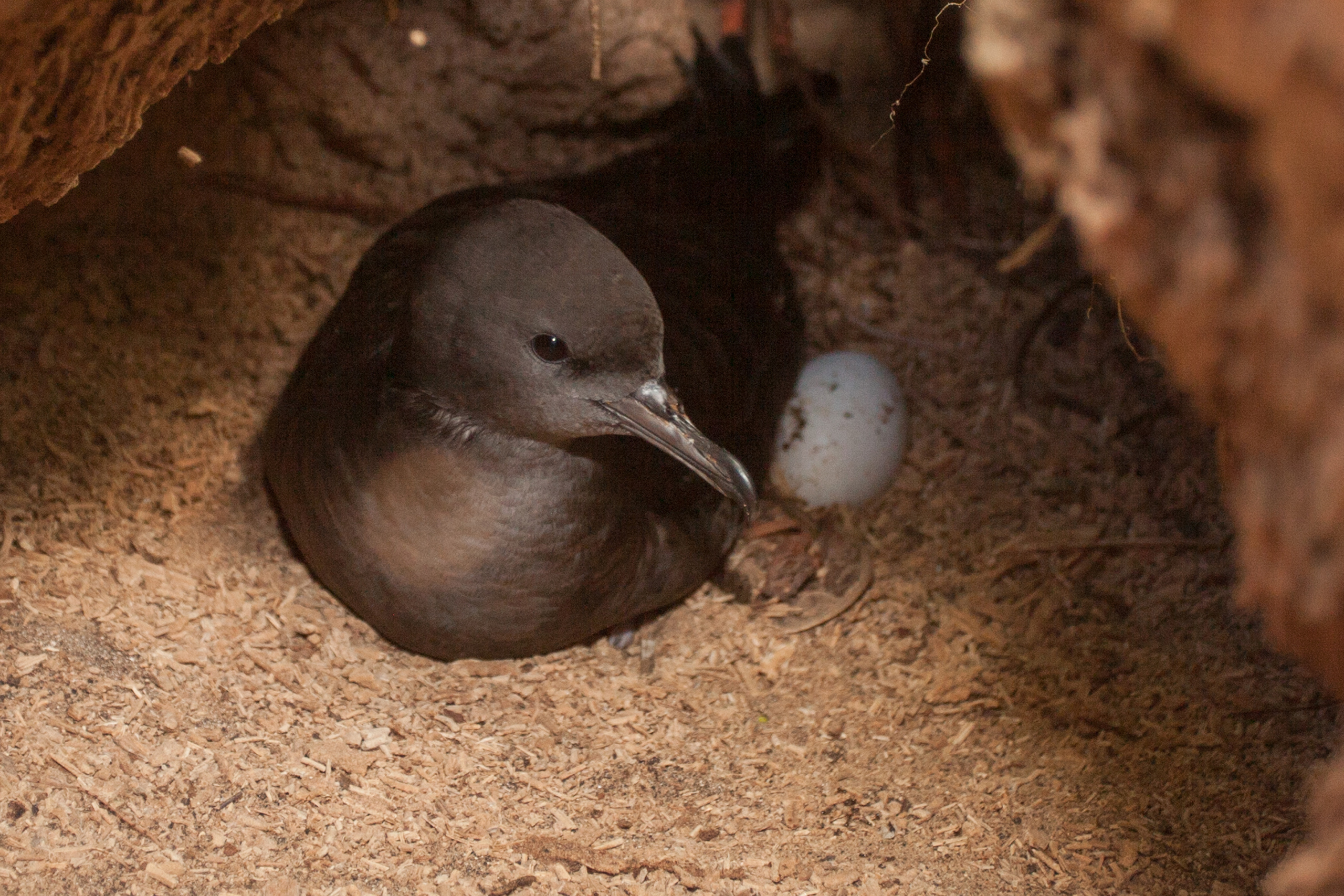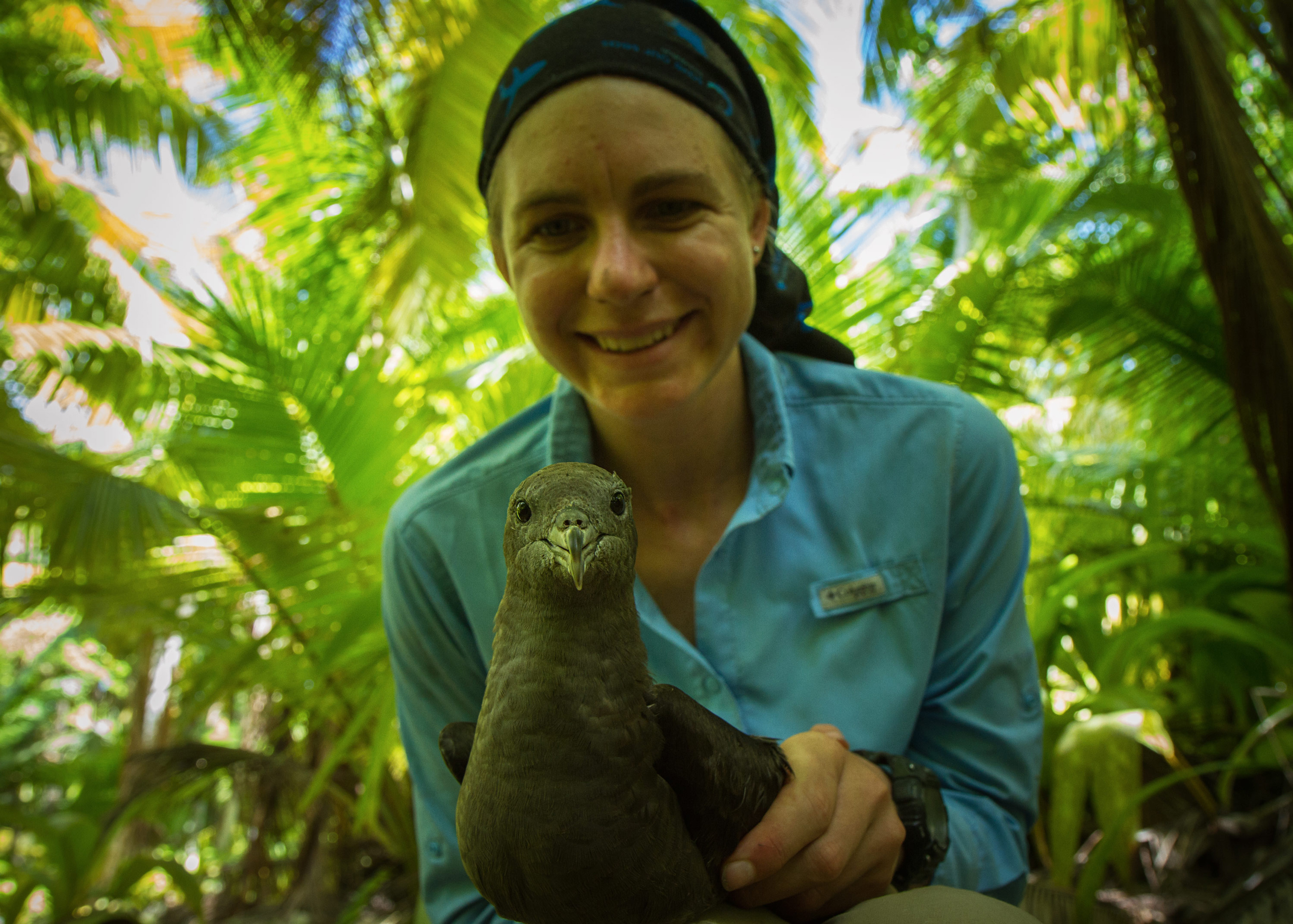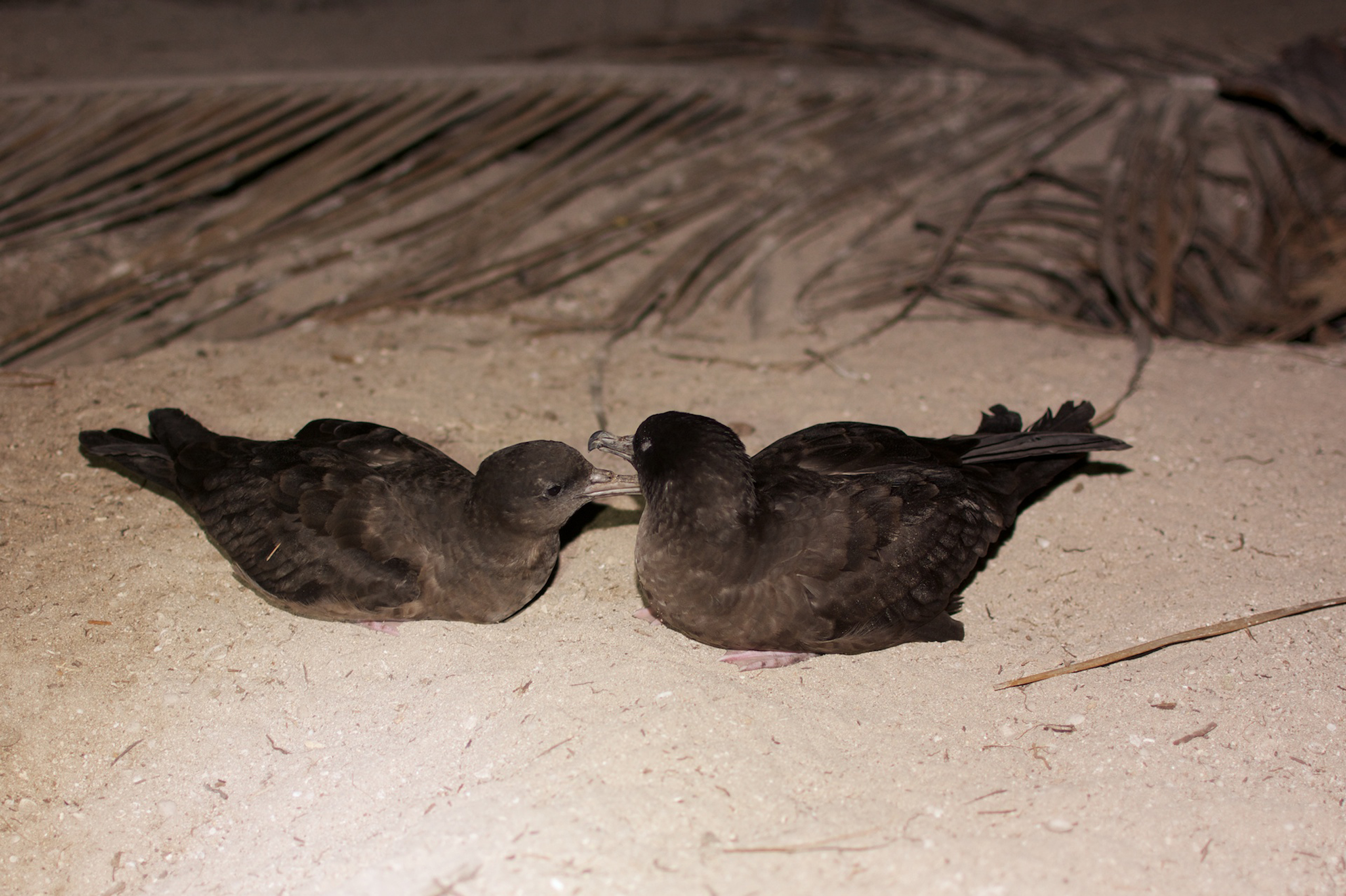Wedge-tailed shearwaters are beating the rat race on D’Arros Island
ʻI have been very fortunate to work on several islands on many different seabird species,’ begins researcher Danielle Keys, the lead author of a hopeful new paper that shows a 10-fold increase in wedge-tailed shearwater birds on D’Arros Island from 2009 to 2021. Danielle, who hails from Nelson Mandela University in South Africa, joined the research team at the Save Our Seas Foundation D’Arros Research Centre (SOSF-DRC) to survey and compare wedge-tailed shearwater population sizes on D’Arros Island in 2016 and 2021. Strong population recoveries on the island, which has been free of invasive rats since 2003, is an incredibly optimistic sign. ʻI have worked on Bird Island (South Africa) on Cape gannets, Reunion Island on wedge-tailed shearwaters and Barau’s petrels, and Marion Island on several albatross, petrel and penguin species. All these islands are unique in their topography and spatial distribution. Like Marion Island, which is home to many burrowing petrels and other island-nesting species, St Joseph Atoll is more or less pristine and this study shows that, if given a chance, birds can recover really well after the eradication of an invasive species.’
Seychelles is a hub for breeding wedge-tailed shearwaters, seabirds that have an enormous range across the Indian and Pacific oceans. As colonial breeders, these birds nest in huge groups, digging out burrows to lay their eggs underground. But taking to land comes at a cost for birds on islands where invasive rats have run amok. Humans have introduced black, brown and Pacific rats to 80% of oceanic islands, with devastating consequences for many seabird species. This is because not only are rats adept at succeeding in their new environment and proliferating quickly, but they have been shown to be one of the most harmful invasive species for seabird populations. Usually introduced accidentally to islands as stowaways in years gone by, rodents (rats and mice) quickly work their way through the local fauna and eat seabird eggs and chicks – even adults. For endangered, slow-breeding birds and ground-nesting species, this can be catastrophic. ʻMarion Island is currently plagued by an invasive mouse species that is decimating the population of seabirds there (especially burrowing birds),’ explains Danielle. A staggering number of seabirds are predicted to go extinct on this sub-Antarctic island. For instance, wandering albatrosses face a grim reality as mice literally eat nesting birds alive. ʻThere is a plan to eradicate the mice on Marion,’ Danielle continues. Indeed, the Mouse-Free Marion programme goes to show how efforts to eradicate rodents to date have often been fraught with complications. With helicopters earmarked to sling rodenticides from airborne buckets, the scale of eradicating rodents (and in this case, saving the 19 of 28 breeding seabird species predicted to go locally extinct as a result of mice on Marion Island) is unprecedented.
And this is why the story of D’Arros Island and St Joseph Atoll, a remote, near-pristine gem in Seychelles’ Amirantes region, is both astonishing and a potential learning curve when it comes to managing seabird populations. ʻSt Joseph Atoll hosts one of the largest breeding colonies of wedge-tailed shearwaters in the Western Indian Ocean, and Fouquet Island (an island within the atoll) is home to most of them,’ says Danielle. ʻBecause of this, the atoll meets one of the criteria for classification as an Important Bird and Biodiversity Area (IBA).’ A survey of the wedge-tailed shearwater population was first done in 2009 (there is no estimate of numbers before the rats were exterminated in 2003) and it was this count that Danielle and her co-authors updated and compared. Danielle recounts the story:
It’s an astounding find. ʻAround the world, according to the International Union for the Conservation of Nature (IUCN) Red List, wedge-tailed shearwater populations are declining. But here in our study, we find that the population has drastically increased and this may be due to the eradication of rats on D’Arros Island,’ says Danielle. ʻWhile we cannot confirm this with full certainty without conducting another census on Fouquet Island, we suspect that D’Arros may be acting as a sink population for its larger neighbour, Fouquet.’ Indeed, St Joseph Atoll represents as much as 16% of the total population of wedge-tailed shearwaters in the Western Indian Ocean. As a result, these birds might be looking for new nesting grounds to avoid overcrowding and thus repopulating D’Arros Island, which lies two kilometres (1.2 miles) from St Joseph Atoll.
There is understandably often ethical discomfort – and a somewhat grey ‘moral’ area – when it comes to the management of invasive species. Indeed, the impact of such a species aside, the mass extermination of any type of animal sounds like a problem we’d prefer to avoid in the first place. However, the consequences of inaction for biodiversity are grave. Scientists who wrote a paper in Nature (‘Seabirds enhance coral reef productivity and functioning in the absence of invasive rats’*) showed that seabird densities are 760 times lower on islands with rats than on those without. And what do seabirds mean for island life that makes them so important to conserve? Well, evidence is beginning to show that these oceanic nomads are a key part of an island’s nutrient cycle and often keep systems like coral reefs flourishing, simply by returning from their foraging journeys equipped with their own nutrient-dense fertiliser in the form of their faeces. Unbelievably complex micro-effects ripple out from the loss of seabirds and their fertilising services. In one study, researchers showed that jewel damselfish were five times more aggressive and 70 times more likely to defend small territories on coral reefs around rat-free islands than those around rat-infested ones. This is because the quality, not necessarily the quantity, of fish food is what changes when the seabird fertiliser is lost to the system. And good food makes territories worth defending. What researcher Rachel Gunn and her co-authors showed in their paper ‘Terrestrial invasive species alter marine vertebrate behaviour’** is that we need to think not only of numbers (of animals and species), but also their behaviours and ability to survive into a changing and uncertain future.
Danielle stresses that there are some technical aspects to sampling and future monitoring worth taking note of in her co-authored publication. ʻWe highlight the importance of understanding the phenology (life cycle) of a species and ensuring that sampling of a breeding seabird is done during its peak breeding period and that the appropriate technology can be used to sample burrowing seabirds accurately and efficiently.’ In the midst a biodiversity crisis, it is hopeful to find stories of success. Eradicating invasive species is challenging and fraught with complications, but when we have indications of where (and how) it might have worked, there is a blueprint to aid efforts elsewhere. ʻThis study gives me a lot of hope,’ concludes Danielle. ʻI have monitored the behaviour, phenology and demographics of many breeding seabird species and counted their breeding population sizes, so that changes can be estimated. This kind of information gives conservation managers the ammunition they need to act pre-emptively, to make appropriate changes to strategies if necessary, and it enables scientists to direct their research and to decide what is important for future studies.’
**References
– Danielle Z. Keys, Robert W. Bullock, Clare Keating & Pierre A Pistorius
‘Rapid increase in size of wedge-tailed shearwater ardent pacifica colony following rat eradication.’ Marine Ornithology: 52: 149–155.
– Graham, Nicholas AJ, Wilson, Shaun K, Carr, Peter, Hoey, Andrew S, Jennings, Simon and MacNeil, M Aaron. ʻSeabirds enhance coral reef productivity and functioning in the absence of invasive rats.’ Nature 559, no. 7713 (2018): 250–253.
– Gunn, Rachel L, Benkwitt, Cassandra E, Graham, Nicholas AJ, Hartley, Ian R, Algar, Adam C, and Keith, Sally A. ʻTerrestrial invasive species alter marine vertebrate behaviour.’ Nature Ecology & Evolution (2023): 1–10.




